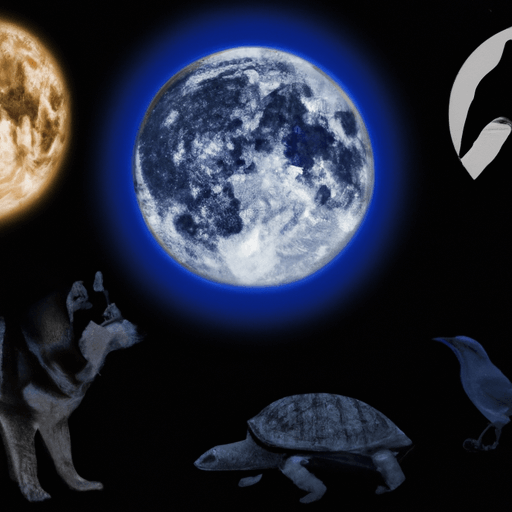Impact of Lunar Cycles on Wildlife Behavior: A Deep Dive
The lunar cycle, marked by distinct phases such as the full moon, new moon, and crescent moon, has been observed to significantly influence the behavior of various wildlife species. The shifts and changes in behavior, rooted in the scientific principles of biology and chronobiology, have continually sparked the curiosity of scientists and researchers globally.
The Phenomenon behind Lunar Cycle Influences
The lunar cycle's effects on wildlife behavior revolve around light availability. With the moon's progress through various stages - new moon, crescent moon, full moon - the amount of reflected sunlight that reaches the Earth varies. This change in light intensity plays a pivotal role in altering animal behavior and physical attributes, often linked with survival mechanisms.
Land Wildlife and Lunar Cycles
Predators like lions have been reported to hunt less successfully during the full moon, attributed to the increased visibility. A study in the 'Journal of Animal Ecology' observed that African lions in night hunting are up to three times less likely to make a kill on nights following a full moon. This observation is attributed to prey animals' increased alertness provided by the bright moonlight.
Aquatic Animals and Moon Phases
In contrast, some aquatic life forms, such as coral, spawn synchronously by the lunar calendar. Per 'the National Oceanic and Atmospheric Administration', the coral spawning event on Australia's Great Barrier Reef occurs predictably after full moon phases, offering the advantage of better synchrony and, hence, higher reproduction success.
Avian Wildlife and Lunar Influence
The moon's cycle also affects avian species. For instance, according to a study conducted by P. Bart J. H. M., nocturnal bird migration intensifies during the full moon. This has been suggested to offer the advantage of increased visibility for navigation.
Key Scientific Observations and Opinions
We are still in the infancy of understanding the extensive influence lunar cycles can have on wildlife. What is clear, however, is that the effects are far-reaching and integral to many species' survival strategies. - Dr. Jane Waterman, Behavioral Ecologist.
Conclusion
The diverse behaviors exhibited by wildlife across land, air, and sea in synchrony with the lunar cycle underscore the intricate co-dependency in nature. As research continues to unravel these mysteries, it becomes increasingly clear that the moon has profound influences on Earth's inhabitants far beyond what meets the eye.


















Comments
Leave a Comment